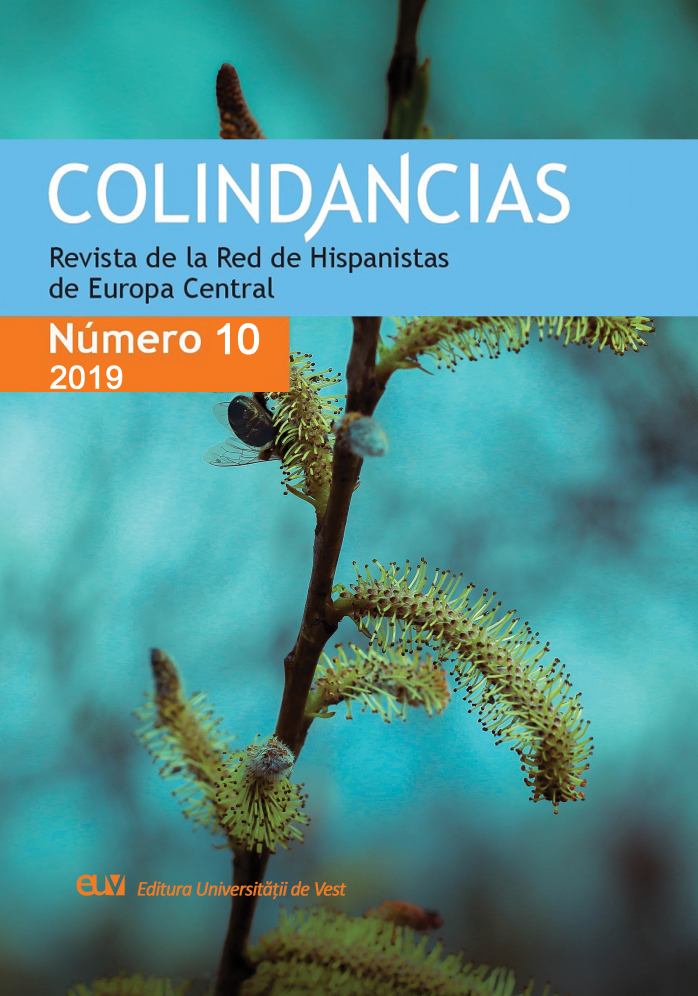¿Existen diferencias entre niñas
y niños en la adquisición de primeras
lenguas? Las estructuras de alternancia
del dativo en español en datos
de adquisición monolingüe
Are there differences between girls
and boys in first language acquisition?
Spanish dative alternation structures
in monolingual acquisition data
Author(s): Silvia Sánchez CalderónSubject(s): Language studies, Language and Literature Studies, Foreign languages learning, Preschool education, Educational Psychology
Published by: Editura Universităţii de Vest din Timişoara
Keywords: construcciones de alternancia del dativo; estructuras de doblado del clítico dativo; a/para-dativos; emergencia; input adulto;
Summary/Abstract: Resumen: Este estudio analiza las diferencias de género biológico (niñas y niños) en la adquisición monolingüe de las construcciones de alternancia del dativo (CAD) en español (doblado del clítico dativo [DCLDs] y a/para-dativos). Se espera que las niñas presenten una emergencia más temprana y una incidencia mayor en la producción de CAD, en comparación con los datos de los niños (Cornett 2014 y Lovas 2011), con independencia de la relación sintáctica que presenten las dos CAD. Además, examinamos el papel que juega el input adulto en la producción de CAD en el habla de niñas y de niños españoles monolingües. Para arrojar luz a estas cuestiones, analizamos datos de producción espontánea de seis niñas y de tres niños, así como de los adultos que interaccionan con ellos, extraídos de CHILDES (MacWhinney 2000). Nuestros hallazgos revelan que las niñas y los niños muestran un patrón análogo en la adquisición de la relación sintáctica noderivacional entre DCLD y a/para-dativos, como se observa en su emergencia similar alrededor de los 2 años. Las diferencias de género biológico no se reflejan tampoco en la baja incidencia de a/para-dativos, por lo que estos patrones podrían explicarse por la frecuencia de exposición a estas estructuras en el input adulto. Abstract: This study investigates the biological gender differences (girls and boys) in the monolingual acquisition of dative alternation (DA) constructions in Spanish (dative clitic doubled [DCLD] structures and a/para-datives). We expect that girls show an earlier emergence, and a higher incidence, in the production of Spanish DA, when compared to boys’ data (Cornett 2014 and Lovas 2011), regardless of the syntactic relationship between the two DA structures. We also examine the role played by adult input in monolingual girls’ and in monolingual boys’ production of Spanish DA constructions. In order to shed light on these issues, we analyze spontaneous production data from six girls and three boys, and the adults that interact with them, as available in CHILDES (MacWhinney 2000). Our findings reveal that monolingual girls and monolingual boys exhibit analogous patterns in the acquisition of the syntactic non-derivational relationship between DCLD and a/para-datives, as seen in their similar emergence at around the age of 2. Biological gender differences are not reflected either in the lower incidence of a/para-datives, which suggests that these patterns could be explained by the frequency of exposure to these structures in the adult input.
Journal: Colindancias - Revista de la Red de Hispanistas de Europa Central
- Issue Year: 2019
- Issue No: 10
- Page Range: 315-336
- Page Count: 21
- Language: Spanish

